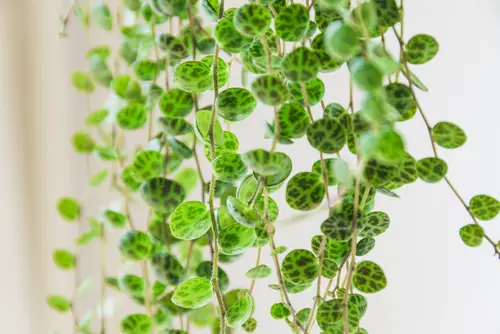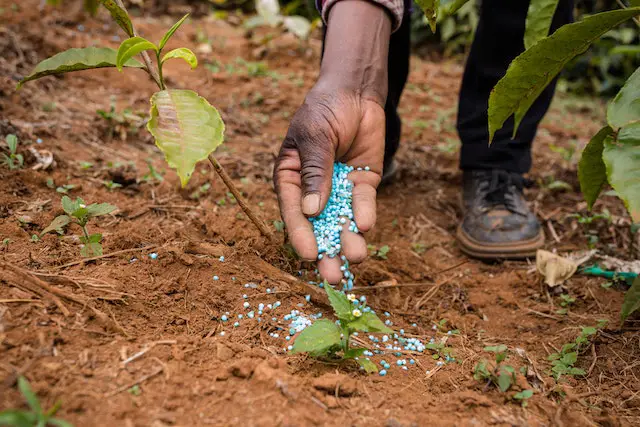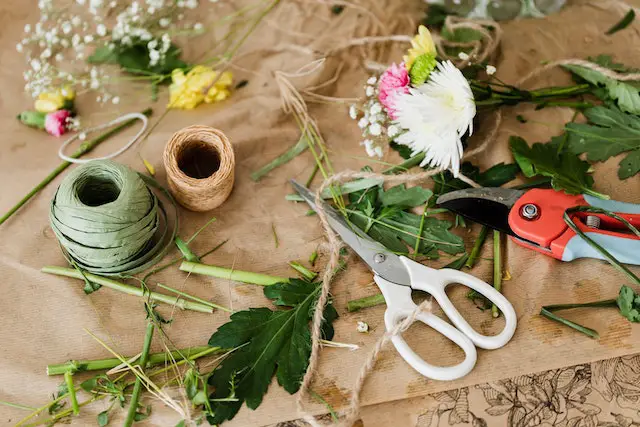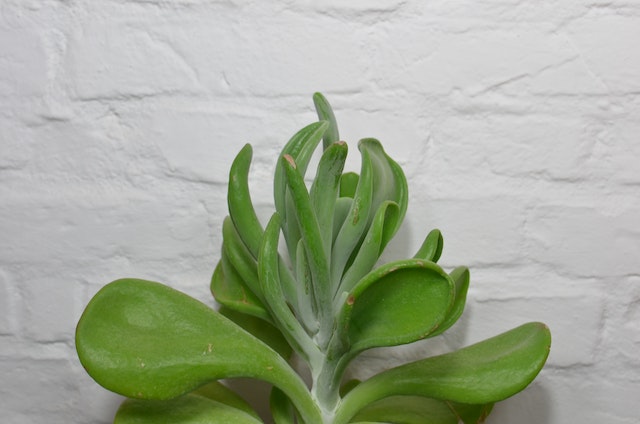The string of turtles is quickly becoming the go-to houseplant, and it’s not complex to gather why. This plant gives your indoor and outdoor setting more features than you would expect from a household plant.
String of turtles, or Peperomia Prostrata, is a perennial succulent best suited for decorative purposes. This miniature succulent is famous for its low maintenance and slow-growing ability, gradually developing into stunning vines and ornamental leaves.
See similar posts:
- Hoya Burtoniae Flower Plant, Grow & Care Guide 2022
- Variegated Odora Plant, Grow & Care Guide 2022
- Calathea Yellow Fusion Plant, Grow & Care Guide 2022
Read on to know more about the string of turtles, its care properties, and much more.
What is The String of Turtles Seeds Plant?

Peperomia Prostrata or string of turtle seeds is a vining and perennial succulent that thrives in humid environments. True to its succulent nature, this ornamental plant is easy to grow and look after.
As its name implies, these plant leaves are small, appearing like the shell of a miniature turtle strung together. It’s a unique and striking shape among the fauna.
A member of the Piperaceae family, its leaves are light green with a trailing vine. As the plant matures, it develops green foliage, a darker green combined with light green and low green thick lines.
Although a relatively slow-growing plant that can take up to five years to fully mature, Peperomia Prostrata will reward any indoor setting with uniqueness and get other plant enthusiasts talking. Also, its slow-growing nature makes it ideal for households with limited spacing.
The string of turtles is a humidity-loving plant. So replicating its tropical habitat ensures your plant flourishes.
Origin and Classification
Peperomia Prostrata goes by many names, with the string of turtles emerging as the most famous alternative. It’s also referred to as Magic Marmer, Chain of Hearts. Radiator plant and Magic Hammer.
Peperomia Prostrata is a plant in the Genus Peperomia and family Piperaceae well known for their tropical and subtropical perennials.
The string of Turtles originates from South America, with the Brazilian rainforest being its native habitat. However, it was once a rare gem in other parts of the world. The turtle’s popularity continues to soar in many households and nurseries worldwide thanks to its adaptability, easy maintenance, and attractive features.
Features of String of Turtles
The most notable feature of the Peperomia Prostrata that sets it apart from its Piperaceae cousins is its miniature turtle shell-like leaves. Here is a detail of this plant’s features to help you quickly distinguish it:
1. Leaves
The string of turtles has thick succulent-like leaves. Mature plants have dark green foliage with some blue tint—the bluish tint results from the dark green combined with light green pattered lines running on the leaves.
The patterned lines, similar to veins, can also have a white, dark-blue or purple color. Eventually, the veins turn silvery-white as your plant grows.
These plant leaves have a turtle-shell-like shape, hence the name string of turtles. Each leaf looks like a young turtle strung together.
2. Height

The magic Marmer is a vining plant with a slow-growing ability. It’s suitable for households with a low ceiling and appears more attractive when hanging as a shooting plant. However, the plant’s shallow root system limits it from becoming tall and can only grow to a maximum of 12 inches in height and 6 inches wide.
3. Flowers
Due to this plant’s slow maturity, it might take a long time for the flowers to bloom. However, when they appear, they are tiny, white buds without a scent. These blooms last for a few days and are few.
The flowers are insignificant, and most plant owners remove them when the plant starts to bloom. The spike-like flowers appear between May and August when the temperatures are warm.
4. Toxicity
Another desirable feature of the Peperomia Prostrata that makes it the perfect household plant is its non-toxicity. Unlike most indoor plants, the string of turtles won’t harm pets or humans.
Basic Care of String of Turtles
Even as a low-maintenance plant requiring minimal attention, it’s best to follow the proper care guide to ensure your plant is pest and disease free. Also, attention to detail allows your plant to thrive, turning your spacing into a beautiful jungle.
1. Light
The string of turtles prefers bright indirect light. Therefore, ensure your plant receives a few hours of morning and evening sun—prolonged sunlight, especially the midday sun, damages the plant’s leaves. Also, you can use fluorescence or artificial lights to grow your Peperomia Prostrata.
Proper lighting for this plant protects it from root rot disease by drying the soil and allowing it to grow fast. Therefore, placing this plant close to a north-facing window is best.
2. Water Requirements

Like most succulent plants, the string of turtles isn’t a water-loving plant. Due to its succulent leaves, this plant doesn’t require too much watering. Instead, it stores water. On the other hand, the Magic Marmer loves moisture considering its native habitat is in the Brazilian rainforest.
Therefore, the accepted rule of thumb when watering your string of Turtles is to water it when the top two inches of the soil is dry. Alternatively, water it once in two weeks during summer and once a month during winter.
Overwatering this plant makes the fragile roots and stems rot. Therefore, settle a sufficient watering schedule to ensure your string of turtles thrives.
3. Humidity
Peperomia Prostrata is a humidity-loving plant. As a tropical plant, this gem will thrive in a setting with 60-90% humidity levels. If the humidity levels drop below 60%, use a humidifier to provide optimal conditions for your string of turtles.
Alternatively, occasionally mist your plant or group your plant collections to ensure the humidity levels stay high.
4. Temperature
Again, as a tropical plant, the string of turtles thrives under moderate to warm weather. This plant prefers temperatures between 60 and 90 ℉ ( 15°C- 32℃ ).
If the temperatures exceed or go below these figures, your Magic Marmer will have stunted growth and damaged vines. Therefore, place your plant away from drafty locations, and during the cold season, ensure it’s in a warm spot.
5. Soil Requirement
The string of Turtles is a vining plant. As a result, it needs well-aerated and fast-draining potting soil. For optimal plant health, plant Peperomia Prostrata in an aroid mix. A quality potting mixture of peat moss and composted organic matter will provide your plant with the perfect soil base.
Also, consider adding worm castings to your aroid mix for essential nutrients and minerals. Adding perlite ensures your soil has sufficient air and drains quickly. Finally, use orchid bark to provide stable soil pH ( slightly acidic to neutral ) and aeration.
With these soil requirements, your string of turtles will thrive, and the process will be straightforward when propagating it. Remember, this plant dislikes waterlogged soil; therefore, pay attention to its well-draining soil requirement.
6. Fertilizer Requirement

Peperomia Prostrata isn’t a heavy feeder. Still, it’s best to fertilize this plant twice a month during its growing season. Slow releasing fertilizer, diluted to half strength, allows the string of turtles to mature faster and the leaves to develop a bright shiny vigor. Most importantly, avoid feeding this plant during late fall and winter.
7. Potting and Repotting
First and foremost, ensure your pot has a drainage hole to allow water to drain quickly. Also, considering the string of turtles is a slow grower with miniature roots, it’s not necessary to repot your plant.
Still, it’s best to repot this plant if it becomes overcrowded or once the vines and roots are overgrown. In addition, you can repot your plant if it develops root rot or when changing the topsoil when it’s not growing properly. Finally, always repot this plant during its growing season ( early spring ).
8. Pruning
Occasionally pruning your string of turtles allows it to maintain an aesthetic appearance. As such, trim dead or damaged leaves and stems. Also, pruning can help stimulate new growth in a struggling or leggy plant. Ensure when pruning, you use sanitized scissors or sharp nips.
How to Propagate String of Turtles
Peperomia propagation works best at the beginning of the growing season during spring. Propagation through hydroponics and stem cuttings is ideal for this plant. Here is a step-by-step guide on effectively handling the process through stem cuttings.
Stem Cuttings

- Locate a mature and healthy stem. Ensure the vine leaves are green. Using sharp scissors, take a 4 to 6-inch cutting.
- Remove the lower leaves to expose the nodes. New roots emerge from these nodes.
- Place your stem cutting in a pot filled with moist potting mix. Ensure the nodes are below the soil surface.
- You can use rooting fertilizer to speed up root development. Then place your pot and stem cutting in an ideal location that receives bright, indirect sunlight.
- New sprouts will emerge after a few weeks. Gently tug the cutting, and roots have developed if you feel some resistance.
Common Problems Caring for String of Turtles
The magic Marmer isn’t prone to pests and diseases, but if you neglect your plant and fail to adhere to the above care requirements, you will notice the following issues:
1. Pests
Spider mites, mealybugs and white flies can attack your string of turtles, spoiling its foliage and stem systems. Due to this plant’s succulent leaves, it’s prone to mealybug infestation.
It can be critical if you overwater and over-fertilize your plant. To eliminate and keep your plant pest-free, treat your magic Marmer with insecticidal soap or neem oil and regularly clean it to kill these pests.
2. Root rot
The most common cause of root rot is soggy soil and overwatering. The string of turtles, like most succulents, damp soil and letting the roots sit in water will cause decay. Root rot can eventually kill your plant.
Therefore remove the infected roots and repot your plant. Insufficient light and cold temperatures can encourage root rot by not allowing the damp soil to dry.
3. Drooping or Damaged Leaves

Drooping leaves for your magic Marmer is a sign of water stress. Overwatering this plant washes away the nutrients, causing the leaves to shed. Also, subjecting your plant to too much direct sunlight causes it to fade, become dull and lose its variegation.
In extreme cases, the leaves will turn red. Eliminate the damaged leaves and relocate your plant to a spot receiving minimal exposure to the morning sun or bright indirect light.
Final Thought
Now that you are aware of the proper care tips and all details of the string of turtles, there should be no other reason restricting you from acquiring this ornamental plant. Its miniature size makes it the perfect plant for decorative touches and transforming your indoor setting into a beautiful jungle.
Remember to replicate its tropical environment by providing sufficient humidity and keeping the soil moist. Also, this plant’s low maintenance needs make it the perfect choice for busy plant parents, novices and all plant enthusiasts.
Frequently Asked Questions
Is String of Turtles a Succulent?
Peperomia Prostrata is a semi-succulent plant. That is, it has the features of a succulent and a growing plant. Its miniature, succulent leaves have sap to hold moisture. This plant thrives with minimal watering but requires sufficient moisture and humidity like all succulents.
How Long Can a String of Turtles Plant Last?
These plants take 3 to 5 years to attain full maturity. From there onwards, their growth slows down and eventually dies. So the best practice to enjoy your turtle plants for long is propagating or repotting your string of turtles to keep it healthy.
Can You Grow String of Turtles From Seeds?
Yes. It’s possible to grow your Peperomia Prostrata from seeds. However, the string of turtle seeds is rare, and propagation through seeds is only expected in the wild. Therefore, the most suitable method for propagating this plant is through stem cuttings, whereby they develop roots within a few weeks.

Hey, I’m Lisa and I’ve been an avid gardener for over 30 years. I love writing, talking and living in the garden! Feel free to connect with me on my socials below

